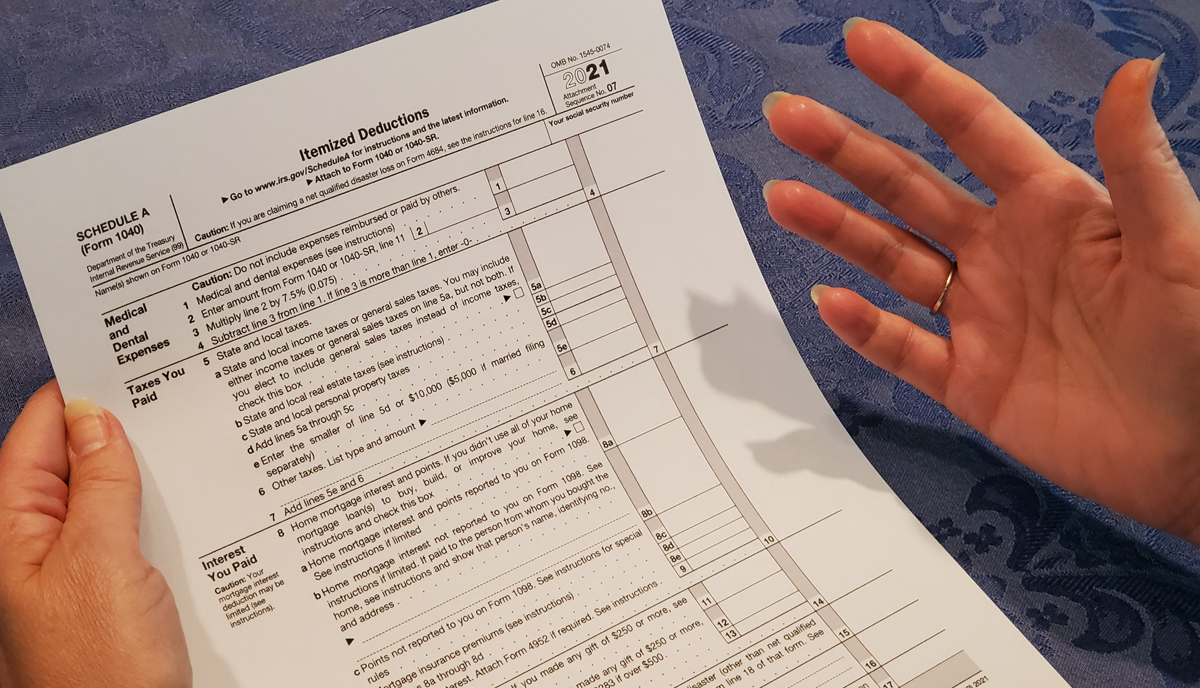Today’s guest post comes to us from Arsalan Ashraf, CPA. Arsalan is the owner of Ashraf Advisory, providing tax preparation, tax planning, payroll and bookkeeping services to physicians all over the United States. You will find Ashraf Advisory on my recommended list of Tax Services. If you are looking for top notch tax advice, contact his firm for a consultation.
Physicians and other high-income professionals are not trained in maximizing their tax benefits. Consequently, doctors who prepare their taxes themselves may miss many deductions they are entitled to take. I don’t know about you, but I want to take advantage of all the tax benefits I am entitled to. Following are six mistakes I see physicians make that are costing them a lot of money in overpaid tax bills.
Not Fully Funding Retirement/H.S.A. Accounts
When you earn a high income and are consequently in a high tax bracket, putting pre-tax money into retirement vehicles has a huge instantaneous return. These deposits can give many physicians a forty percent return the moment they make the deposit, and possibly more depending on the state where they reside. For this reason, be sure to automate these deposits so you never miss the deposit window as you can’t make up for a missed year’s deposit.
The H.S.A. account has three powerful tax benefits: Contributions go in using pretax dollars (that’s an instant 40% return), funds can be invested in the stock market and receive tax free growth, and you can withdraw and spend the funds tax free provided the H.S.A funds are used for qualified medical expenses. These medical expenses do not need to occur in the same year as your reimbursement, meaning they are not use it or lose it accounts. Simply save all your qualified medical expense receipts and use them to be reimbursed at the time of withdrawal of funds. These three tax breaks make the H.S.A. the most powerful retirement account you can use.
Unfortunately, most people spend their H.S.A. money in the same year they make the deposit, which only gives them the advantage of paying for their medical care with tax free dollars, the benefit of long term tax free growth lost. Don’t use your H.S.A. money until you are actually retired.
Treating S-Corporations as One Size Fits All
Each physician has an individual set of circumstances that need to be evaluated when electing to treat their 1099 income as an S-Corporation. S-Corps can be one of the best ways to save payroll taxes and potentially deduct otherwise non-deductible state income taxes among other benefits.
When a physician is primarily being paid W-2 income and picks up extra shifts as an independent contractor, there are a variety of tax savings that can be enjoyed by electing S-Corporation status. To make this successful, they will need to form a business entity at the state level, issue a “reasonable salary”, and file a separate tax return. Having an S-Corp will often cause additional annual state fees, increased accounting & payroll services, and limits in the amount that can be contributed to retirement plans.
On the other hand, picking up this extra income as a sole proprietor instead of an S-Corp can help increase retirement contributions (solo-401K and or Cash Balance plan) while keeping fees low.
Skipping Mid-year and Year-end Tax Planning
Keeping tabs on what your tax bill will be and staying ahead of what you owe the IRS will save a lot of headaches. Taking a mid-year bonus and paying only 22% taxes on it when in fact you will owe 37% tax on the bonus can get you into hot water. You never want to discover on April 6th that you have 9 days to come up with an additional $40,000 of tax, plus interest and penalties, but you don’t have enough money available because your bonus has already been spent. You never want to get into a situation of owing money to the IRS as they are the most ruthless creditor. Tax planning sessions that keep you on track will help avoid unexpected tax ramifications.
This is also the time to make sure retirement plan contributions are on track to be fully funded before missing an important deadline.
Employing a Spouse
When employing a spouse in your business, one spouse takes a deduction for wages and the other spouse picks up additional income. This can be a great way for the family to sock away additional tax protected retirement funds. However, it needs to be analyzed carefully as this process also creates additional payroll taxes that could offset the expected gain. Often one spouse has already reached the social security payroll tax maximum, so by employing the other spouse, the family ends up having to pay 12.2% in social security tax on their salary.
It is important to assess the overall family tax consequences to figure out the most tax efficient salary to pay the second spouse. It may make good financial sense to pay $25K in salary to the second spouse and have $20.5K of it go into their retirement account, which leaves only $4,500 of taxable income. Bumping up the second spouses wage to $50K may not make financial sense for their family. Since the additional payroll taxes owed on income that could have been collected by the spouse owning the business would avoid paying an additional 12.2% in payroll tax. Your tax advisor can help determine the sweet spot when creating additional family retirement plan contributions without creating additional family tax consequences.
Not having Eligible Family Members on Payroll
Employing your children that are legitimately helping with the business (modeling, moving boxes, maintaining schedules, cleaning, etc.) can be a wonderful way to pay the kiddos while you generate a tax break in doing so. You, as the business owner, can deduct the wages you pay your children while they in turn are sitting at a zero tax bracket. This may also encourage your kids to set up ROTH IRAs that can provide the gift of compounding tax free growth from such a young age.
If your children work for you between the ages of 10 and 18, and make only eight years’ worth of $6,000 Roth IRA contributions, they will have contributed a total of $48,000 to their Roth IRA account with money you would have paid taxes on had you not employed them. If those contributions were invested in the stock market earning an average of 8% per year, and if this account remained untouched for 50 years after leaving high school, over the entire 58 year period, at age 68, your children will have a balance of $3,630,340 in their IRA account to use for their retirement. This is essentially making your children millionaires with money provided by the government.
Not Bypassing the SALT tax Deduction Restriction
For physicians working in states with income taxes, there are new workarounds to the State and Local Income tax (SALT) $10K cap on Schedule A deductions. This work around involves paying income taxes at the entity level, rather than on your personal tax form. Understanding the tax law allows one to collect income in different taxable forms. The right form of paying yourself can mean a swing of several thousand dollars in taxes owed.
There are many additional ways tax planning can save a physician money and finding them all in each situation is the job of a tax advisor. Don’t send money to the IRS that belongs in your pocket simply because you don’t know the rules. Hiring a Tax Advisor is likely to save you a lot more money than they charge for their services.
If you are looking for tax help, contact Ashraf Advisory and get the help you need. Find them on my Recommended Tax Services list. Find other advisor lists you need on the recommended tab at the top of my Webpage.





